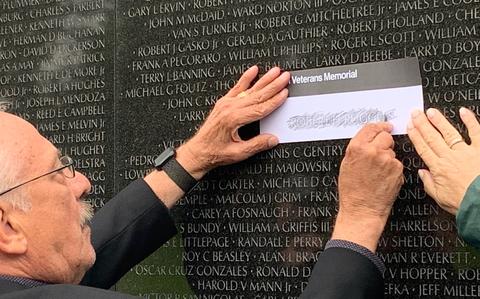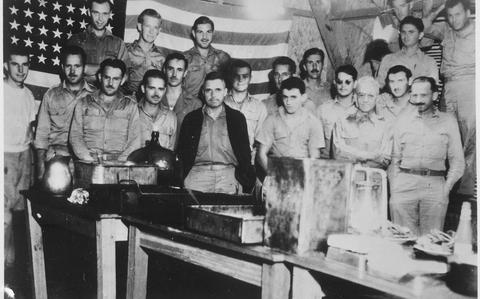You are using an out of date browser. It may not display this or other websites correctly.
You should upgrade or use an alternative browser.
You should upgrade or use an alternative browser.
Veterans...Get the hell in here now!
- Thread starter 6ohMax
- Start date
BarnBuster
Virtually Unknown Member
"By October 29, the situation for the Lost Battalion was desperate. Isolated for six days, the men had beaten back five enemy assaults. Deaths and casualties mounted, yet they couldn’t evacuate the bodies. They pooled their meager supplies of food and ammunition and risked German sniper fire to get water..
...the Nisei had fought for five days, but hadn’t made much progress against the heavily entrenched Germans. Third Battalion’s I and K Companies, exposed on a narrow ridge with a steep drop on the left and right, had no choice but to go straight up the middle in a “banzai charge.
For the US Army, the rescue of the Lost Battalion remains one of the top ten ground battles in its history. For many, questions remain unanswered about the campaign to this day. But at the time, the Nisei soldiers didn’t ask questions. They just performed their duty as American soldiers.
The 442nd is the most decorated unit in U.S. military history for its size and length of service, with its component 100th Infantry Battalion earning the nickname "The Purple Heart Battalion" due to the number injured in combat.
In 1962, Texas Governor John Connally made the veterans of the 442nd "honorary Texans" for their role in the rescue of the Lost Battalion. Due to the discrimination of that era, three members of the 442nd, Barney Hajiro, James Okubo, and George Sakato, were originally awarded lesser military medals for their participation in the rescue, later upgraded to the Medal of Honor in 2000, Okubo posthumously. A special law was passed in 2010 awarding members of the unit, and those of the Military Intelligence Service, the Congressional Gold Medal, for which a ceremony was held at the Emancipation Hall of the U.S. Capitol in October 2011, followed by local ceremonies in California, Hawaii, and other states from which unit members had been unable to travel to Washington, D.C.
BarnBuster
Virtually Unknown Member
This is a pretty cool video of the USS Texas (BB-35) in dry dock undergoing restoration. Make sure you crank up the quality setting for the detail as he does the walk and talk. (The blister he keeps talking about is a passive defence system of plating against naval torpedoes.) The "Battleship Texas Foundation" has other videos on their YT site. I got lost down that rabbit hole last night lol. A lot of naval architecture minutiae so not for everybody.
 battleshiptexas.org
battleshiptexas.org
News | Battleship Texas Foundation
View the latest news and updates from the Battleship Texas Foundation. Contact us with any questions!
Last edited:
raratt
Well-Known Member
FYI: It's a designation, not a code name, but still good info.

 www.quora.com
www.quora.com

Why did the Blackbird's codename change from RS-71 to SR-71?
Answer: Fig:- President Lyndon Johnson. 1. The SR-71 was designed by a team of Lockheed personnel led by Clarence "Kelly" Johnson, at that time vice president of the company's Advanced Development Projects, known as the "Skunk Works." 2. This entire project was kep...
Hook Daddy
Well-Known Member
Did you serve with Capt Ross Bell? He skippered both the Rush & Jarvis.I was on the Rush pre-fram, back in the late 80s. Had some good times. Here’s what she looked like back then. Hard to believe they are all gone now.
I did a couple of 210 tours and a couple 180's as well.
Hook Daddy
Well-Known Member
He was our CO if I recall correctly. I had several friends on the Jarvis as well, we were both out of Alameda at the time. I did a few years on a buoy tender as well, but the 157’Did you serve with Capt Ross Bell? He skippered both the Rush & Jarvis.
I did a couple of 210 tours and a couple 180's as well.
He was our CO if I recall correctly. I had several friends on the Jarvis as well, we were both out of Alameda at the time. I did a few years on a buoy tender as well, but the 157’
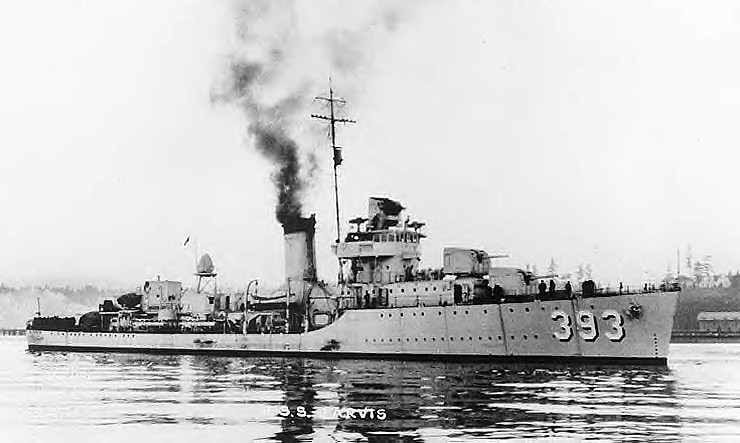
USS Jarvis (DD-393) - Wikipedia
My uncle served on her, USN though and in that incarnation she was a Bagley class destroyer. Welcome to RIU.
BarnBuster
Virtually Unknown Member

Chief select gives birth. Chiefs mess pins her at the hospital
Big life events came at Chief Hospital Corpsman Jacqueline Reyes and her family last month.
raratt
Well-Known Member
Colorado could become 2nd state to decriminalize mushrooms
Fresh off his third tour of duty in Iraq and Afghanistan, Jason Lopez awoke in crisis from an alcohol-induced nap during a family gathering in Colorado in 2014. Instead, he turned to what he had dabbled with for much of his life: psychedelic mushrooms. Lopez is among a group of veterans...
BarnBuster
Virtually Unknown Member

THE WALL OF FACES - Vietnam Veterans Memorial Fund
The virtual Wall of Faces features a page dedicated to honoring and remembering every person whose name is inscribed on the Vietnam Veterans Memorial in Washington, D.C. In an effort […]
BarnBuster
Virtually Unknown Member
On 6th November 1917, after three months of fierce fighting, British and Canadian forces finally took control of the tiny village of Passchendaele in the West Flanders region of Belgium, so ending one of the bloodiest battles of World War I. With approximately a third of a million British and Allied soldiers either killed or wounded, the Battle of Passchendaele (officially the third battle of Ypres), symbolises the true horror of industrialised trench warfare.
The Passchendaele campaign was preceded by what was then the largest planned explosion in history. For months, British, Canadian and Australian tunnellers had burrowed underneath the German defences on Messines Ridge in the Ypres Salient, where they planted 21 massive explosive mines. At 3 a.m. on June 7, 1917, 19 of them were detonated in rapid succession. The resulting blasts knocked waiting British troops off their feet; the rumble could be heard as far away as London. An estimated 10,000 German soldiers perished and the cratered landscape was soon in Allied hands. Amazingly, two of the mines failed to explode. One was detonated by lightning in 1955, killing a cow. The other, its location since discovered, lies underneath a Belgian farm. Authorities have declared it too difficult and dangerous to dismantle even 100 years later.
General Sir Douglas Haig, the British Commander in Chief in France, had been convinced to launch his forces at the German submarine bases along the Belgian coast in an attempt to reduce the massive shipping losses then being suffered by the Royal Navy. General Haig also believed that the German army was close to collapse and that a major offensive …“just one more push”, could hasten the end the war.
Thus the offensive at Passchendaele was launched on the 18th July 1917 with a bombardment of the German lines involving 3,000 guns. In the 10 days that followed, it is estimated that over 4¼ million shells were fired.
(WW1 artillery shells had a 30% detonation failure rate. Coupled with the fact that they buried themselves sometimes yards deep, areas of WW1 battlefields are off limits still today and farmers regularly turn up UXO (unexploded ordinance)/ERW (explosive remnants of war) The “Iron Harvest” is the annual “harvest” of war remnants including UXO, barbed wire, and shrapnel collected by Belgian and French farmers after ploughing their fields; see Red Zone below bb.)
The actual infantry assault followed at 03.50 on 31st July, but far from collapsing, the German Fourth Army fought well and restricted the main British advance to relatively small gains.
Shortly after the initial assault, the heaviest rains in more that 30 years began to fall on Flanders, drenching the soldiers and the low lying fields over which the battle was taking place. The artillery shells that had bombarded the German lines only days before had not only torn up the land but had also destroyed the drainage systems that were keeping the reclaimed marshland dry. With the continued pounding, the rain drenched ground quickly turned into a thick swamp of mud.
Even the newly-developed tanks made little headway; unable to move, they quickly became stuck fast in the liquid mud. With each new phase of the offensive the rain kept falling, filling the shell holes with water. The clinging mud caked the soldier’s uniforms and clogged their rifles, but that was the least of their worries as in places the mud had become so deep that both men and horses were drowned, lost forever in the stinking quagmire. It took six men to stretcher a wounded soldier across the glue-like surface. Many survivors recalled stumbling along, their boots being sucked off their feet and then came the sensation of sinking up to their waists in mud. Additionally, thousands of exhausted horses and mules died attempting to haul gun carriages across the devastated, cratered landscape which had been churned up by shelling.
The only solid structures in this sea of desolation were the enemy’s concrete pillboxes; from here the German machine-gunners could scythe down any Allied infantry that had been ordered to advance
With the hopelessness of the situation apparent, General Haig temporarily suspended the attack.
A fresh British offensive was launched on the 20th September under the command of Herbert Plumer which eventually resulted in some small gains being made including the capture of a nearby ridge just east of Ypres. General Haig ordered further attacks in early October which proved less successful. Allied troops met stiff opposition from German reserves being poured into the area, and many British and Empire soldiers suffered severe chemical burns as the Germans employed mustard gas to help defend their position.
Unwilling to accept failure, General Haig ordered three more assaults on the Passchendaele ridge in late October. Casualty rates were high during these final stages, with Canadian divisions in particular suffering huge losses. When British and Canadian forces finally reached Passchendaele on 6th November 1917 hardly a trace of the original village structures remained. The capture of the village did however give General Haig the excuse to call an end to the offensive, claiming success.
In the three and half months of the offensive the British and Empire forces had advanced barely five miles, suffering horrendous casualties. Perhaps their only consolation was that the Germans had suffered almost as badly with around 250,000 killed or injured. In the aftermath of the battle, General Haig was severely criticized for continuing the offensive long after the operation had lost any real strategic value.
Perhaps more than any other, Passchedaele has come to symbolize the horrors and the great human costs associated with the major battles of the First World War. British Empire losses included approximately 36,000 Australians, 3,500 New Zealanders and 16,000 Canadians – the latter of which were lost in the last few days / weeks of the final bloody assault. Some 90,000 bodies were never identified and 42,000 never recovered.
These battles and the British Empire soldiers that perished in them are today commemorated at the Menin Gate Memorial in Ypres, the Tyne Cot Cemetery and Memorial to the Missing.
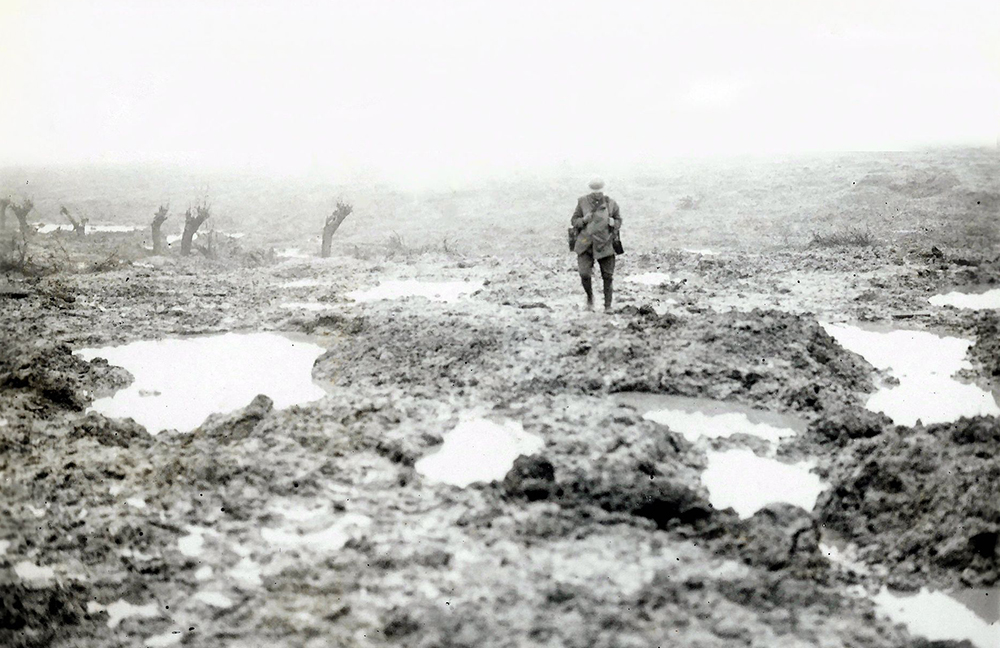
Passchendaele – Inside the First World War's Infamous Slaughter in the Mud - MilitaryHistoryNow.com
“The appalling casualties, the mud and the overall futility of the offensive have made Passchendaele an emblem of the mind-boggling waste of the First World War.” By Darrell Duthie “I DIED IN HELL,” wrote famed...
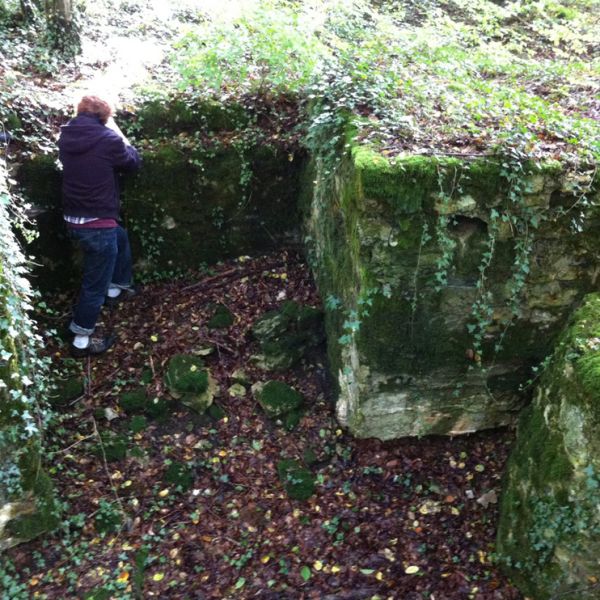
Red Zone
France's Zone Rouge is a lingering reminder of World War I's Battle of Verdun.
BarnBuster
Virtually Unknown Member
"A team from the University of Delaware, working in partnership with the U.S. Defense POW/MIA Accounting Agency (DPAA), recently located the wrecks of five B-24 Liberator bomber aircraft that crashed into the Adriatic Sea during World War II. Of the five B-24s, three were positively identified and are associated with the loss of 23 U.S. service members."
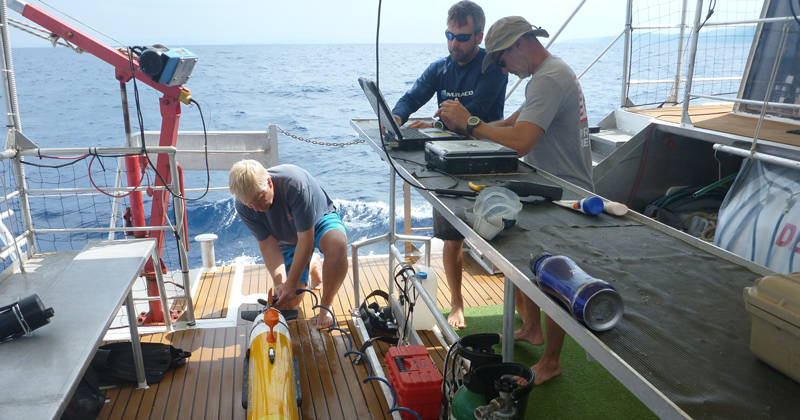
 www.udel.edu
www.udel.edu

Missing WWII aircraft found | UDaily
UD researchers lead team to the Adriatic Sea in search of missing aircraft
raratt
Well-Known Member
FYI:

 news.va.gov
news.va.gov

Veterans Day 2022 free meals, discounts and offers - VA News
These Veterans Day free meals, discounts and other programs are for Veterans, their families, caregivers and survivors are aware of all resources available to them.
BarnBuster
Virtually Unknown Member
“Bataan veterans deserve the recognition of our nation’s highest and most distinguished honor for their perseverance and patriotism. We must never forget their undaunted heroism in the face of unthinkable conditions and horrific abuses,”
I lived in the Philippines in the 60's, we toured Corregidor and drove the Bataan Death March route. Small white crosses everywhere on the road side.“Bataan veterans deserve the recognition of our nation’s highest and most distinguished honor for their perseverance and patriotism. We must never forget their undaunted heroism in the face of unthinkable conditions and horrific abuses,”
Unfortunately I understood the story Dad told and I knew what the crosses meant.
BarnBuster
Virtually Unknown Member
I lived in the Philippines in the 60's, we toured Corregidor and drove the Bataan Death March route. Small white crosses everywhere on the road side.
Unfortunately I understood the story Dad told and I knew what the crosses meant.

Here's the story on the markers they now have along the route:
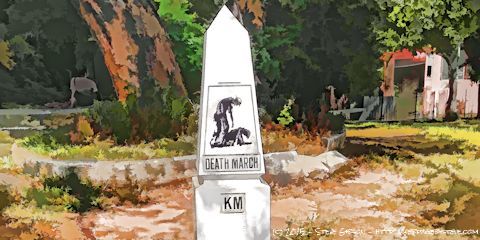
Death March Markers - Filipino American Memorial Endowment
 filipino-americanmemorials.org
filipino-americanmemorials.org
BarnBuster
Virtually Unknown Member
"Once Completed and Installed in 2024, “A Soldier’s Journey” Will be the Largest Freestanding High-Relief Bronze in the Western Hemisphere."

 www.smithsonianmag.com
www.smithsonianmag.com

 firstcolors.worldwar1centennial.org
firstcolors.worldwar1centennial.org

An Exclusive Preview of the New World War I Memorial
One sculptor and his team of artists take on the epic project of conveying the century-old conflict through a massive bronze installation

First Colors Ceremony
On April 16, 2021 the World War I Centennial Commission will celebrate the Inaugural Raising of the Flag of the United States of America over the newly constructed National World War I Memorial site in Washington, DC.
Similar threads
- Replies
- 10
- Views
- 1K
- Replies
- 8
- Views
- 1K
- Replies
- 33
- Views
- 4K




